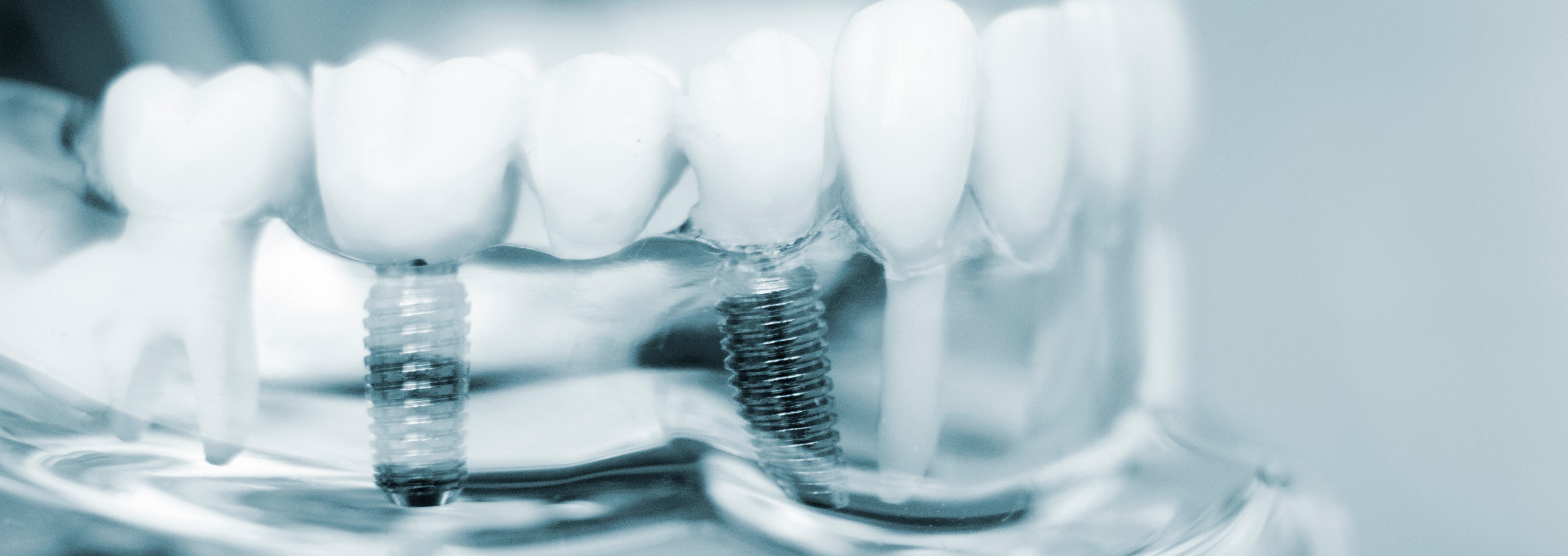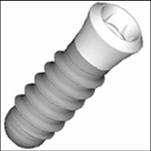
Oral and Maxillofacial Surgery
Implantology
What is an implant?
Implants can be best described as "artificial tooth roots". In modern dentistry, they are increasingly used to treat tooth loss or edentulism (toothlessness).

An implant consists of 3 basic components:
- The implant itself (implant body)
Implants are the recreated version of natural tooth roots and are anchored directly into the bone. - The implant assembly (abutment)
This establishes the connection between the implant body and the dental prosthesis, which consists of crones or bridges (superstructure). - The superstructure (crones or bridges)
Superstructures are crones or bridges on the tooth implant. They can be permanently fixed or be removable (for example, as full dentures).
Treatment for tooth loss
The loss of teeth can have different reasons, with caries and inflammation of the periodontium (periodontitis) playing a key role. Eliminating the causes of caries and periodontitis, such as poor oral hygiene and/or inadequate dentures, is a prerequisite for the success of a possible implant treatment. The use of implants for restoring gaps between teeth or treating a toothless jaw is becoming more frequent. They enable the restoration of the entire dental arch and contribute to the preservation of the bone structure.
Requirements for the use of implants
Implants are only sensible if certain conditions are met by the patient. Their cooperation is one of the most important criteria for success.
The requirements are:
- Perfect oral hygiene
This not only prevents the occurrence of bacteria-related diseases on the remaining teeth, but also greatly improves the chance of a successful implant treatment. - Inflammation-free set of teeth
Diseases in the oral cavity caused primarily by bacteria should be successfully treated beforehand (for example, gingivitis or periodontitis). Excellent oral hygiene is required under all circumstances. - Preferably no smoking
Statistics show that smoking considerably reduces the chance of a successful implant treatment. Healing processes are slower, and the immune system is limited in its function.
-
Preparatory examinations
If a patient decides to get an implant inserted, an appointment can be arranged during our implantology consultation hours. In the first meeting, we will discuss your health history and conduct medical examinations. We will also take an X-ray (OPG = orthopantomogram). In special cases, a more detailed computer tomographic image (CT scan) may be necessary. The expectations and wishes of the patient play an important role in planning the procedure.
Producing the implant
Based on the information we obtain, we plan the implant quantity, diameter, length and position. If the bone supply is not sufficient, a bone augmentation must be carried out. To ensure the optimal position during the procedure, a drilling template is made in the dental laboratory according to our specifications.
Procedure
During the procedure, we open up the mucous membrane in the insertion area to reach the surface contour of the bone. With a special drill, we prepare an implant bed into which the implant is inserted. The wound is closed with sutures, and a preliminary dental prosthesis is integrated. This dental prosthesis varies, depending on the initial condition; it can be fixed or removable.
After the procedure
In the lower jaw, the treated area generally needs three to five months to heal; in the upper jaw, four to six months are required. Following the healing period, the implants are uncovered. To do this, a small incision is made above the implant head to open the mucous membrane, and a healing abutment is screwed in. This minor procedure can be done under local anaesthesia.
-
After the consultation for implant insertion, we prepare a cost estimate for the procedure and for the producing the prosthesis. This cost estimate must be submitted to the health insurance provider of the patient before treatment begins in order to clarify reimbursement of costs.
Cost coverage
In general, the statutory health insurance providers currently only cover an implant treatment if, for example, there is a congenital deformity. Health insurance providers also cover the costs for patients who have been seriously injured in an accident or require treatment due to a tumour surgery on the jaw. Private health insurers and state aid agencies have varying rules. We recommend having the cost situation clarified before treatment begins.
-
Implants are not always taken into consideration for restoring teeth.
They are not used in the following cases:- When bone substance is missing and bone support is not possible (for example, due to severe underlying illnesses)
- When the patient has an illness, such as jawbone or gum inflammation
- When the patient has poor oral hygiene
- When the patient does not cooperate








